INTRODUCTION
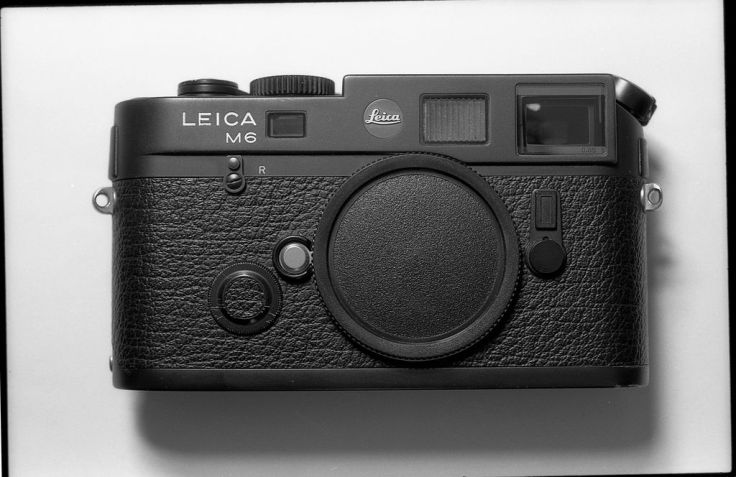
I’m not going to wax poetic about the Leica M6 TTL .85.
I don’t need to.
This camera is the best 35mm film camera ever conceived or constructed. Chances are, you’re reading this because you’re a photographer interested in buying the best Leica that you can. Or perhaps you already own a Leica and just enjoy mentally masturbating to articles that continue to justify your substantial and tasteful purchase.
In any case, there are enthusiastic blogs and articles about every Leica body out there. It would seem that every Leica M is very special. So I’m simply going to tell you, in a dispassionate, list format, why, compared to the M6 TTL .85, all the other Leica M’s out there are absolute trash. I will prove, beyond reasonable doubt that the M6 TTL .85 is perfect for the type of shooting that I do and the absolute apex of human optical engineering, metallurgy and industrial design. It may not be perfect for collectors or for other styles of shooting. But only losers shoot like that. And collectors are dweebs.
So here’s why I bought and plan to always use, not shelve, my 1999 black chrome Leica M6 TTL .85, as if it’s not instinctively evident and obvious to any sentient being.
LIGHT METER
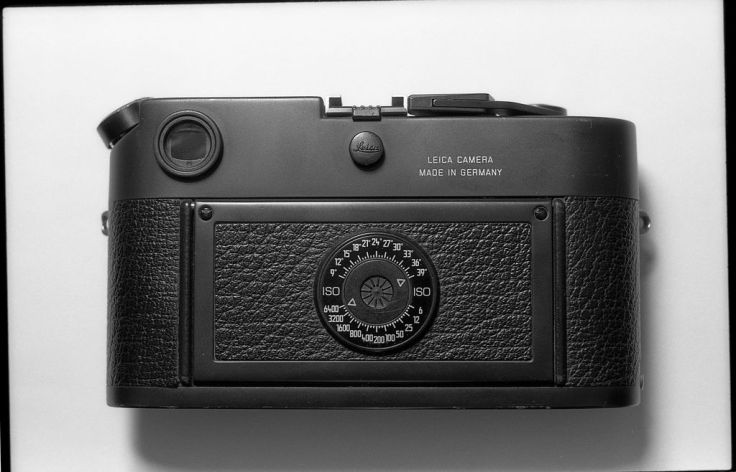
–If you’re going to buy a $2k+ 35mm camera, it may as well contain a good, built-in light meter. While I appreciate the craftsmanship of M3’s and M2’s, impoverished Leica photographers such as myself cannot justify the financial outlay on something that can’t be used comfortably for paid shoots to return the investment. Voigtlander Bessa’s are a joke. Their light meters are more like warning lights of impending mechanical failure. And Leica M-A shooters, if you wanted to prove to everyone that you know Sunny 16, a Barnack says “Luddite” much more clearly and affordably.
–Classic M6 bodies are more affordable than TTL models but I’ve never liked the idea of a two LED meter display. Reminds me of the Yashica GSN Electro. I’m not buying a fucking piece of shit Yashica, I’m buying a Leica. Even Nikon has three LED’s. The problem is that Leica LED’s cost about $500 each and I want three of them. Over, Under, Correct. I don’t want to guess about what my meter is telling me. I want to be one with my meter. I want fast, accurate, easy operation. I knew the exposure before I pressed the shutter release half way anyway, I’m just looking for agreement. The newer Bessa’s contain nine LED’s. Are you playing a video game or are you taking a picture?
–The M6 TTL meter is the earliest Leica M that you can buy that contains the world’s highest quality center-weighted averaging meter built into any camera. I’ve never used another body with such a fine meter. The LEDs brighten and dim as you adjust, not simply turn on or off like a dispassionate binary automaton. It’s the difference between playing a keyboard with weighted keys and not. And all Leica shooters are accomplished pianists. Very fine, accurate readout from a mere 6 ISO to 6400 ISO, not the lowly and unprofessional 1600 top ISO of the CL or 3200 of the M5 and inferior Bessa line. This is the same meter spec inside the current production, highly regarded, highly priced, Leica MP. It’s the same type of meter that Leica removed from the MP to create the all mechanical M-A because it’s such a good meter that it has no business being mixed up inside a model which is intended to represent mechanical excellence alone.
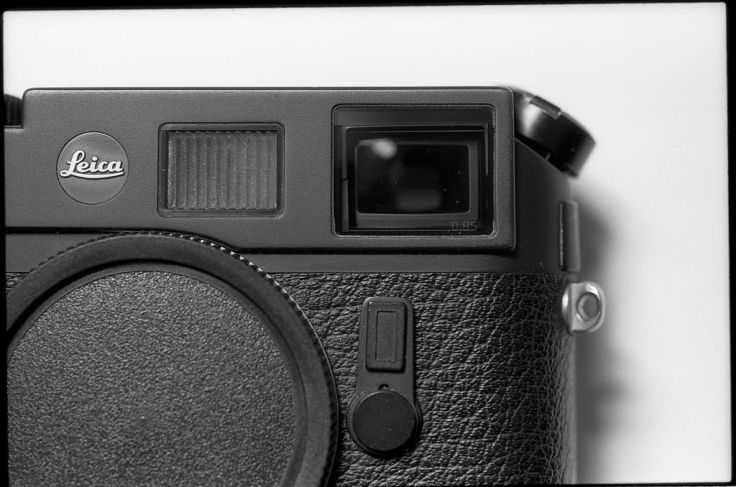
–There’s a certain, famous Leica repair technician who has been discouraging her clients from buying an M6 TTL citing that Leica no longer supports the metering electronics. Around the internet, you might hear people mindlessly warn about failure of “the metering board” in M6 TTL’s. But this is all horseshit. While I don’t deny for a thousandth of a second that this certain famous Leica repair technician knows what she is talking about, I disagree with her reasoning and wonder if she simply doesn’t want to work on newer Leica’s. While it’s true that Leica no longer supports electronic repair/replacement on the M6 TTL, one has to consider that these cameras are now about two decades old and were only manufactured for a few years. Additionally, Leica has long discontinued support on M6 and M5 meters but nobody’s discouraging anyone from buying those models, whose meters still work by and large. So why tell people not to buy M6 TTL’s because of this? Are the M6 TTL meters prone to failure? I only own one M6 TTL and it’s always worked beautifully for me. I’m looking to buy a second one and have yet to stumble across any with noted bad meters. For a more qualified answer to this rumor, I asked Don Goldberg, aka DAG for his opinion. First of all, he clarified that there are two circuit boards associated with the light meter in the M6 TTL so it’s pure silliness when people say “the board” is prone to failure. And he went on to say “I’ve had 2 Leica M6-TTL cameras in so far that needed new main circuit boards. That’s out of 489 M6-TTL cameras that I’ve had in for repair.” This as as of July 2019. And those two board replacements? “One of the circuit boards that was bad was due to someone removing the body shell without first removing parts that got in the way of the main board & damaged the board. The other one I think was defective & had to go to Leica, USA. All in all the M6-TTL is very reliable. I think the reason I’ve had 489 M6-TTL cameras in my shop is that they sold lots of them, people want complete overhauls eventually.” So yeah.
SHUTTER SPEED DIAL

–While it doesn’t match any other 35mm Leica body besides the recently discontinued M7, the reverse shutter speed dial of the M6 TTL is undeniably superior. Kowtowing the meter again, the shutter speed dial rotates in the direction logical with the movement of the meter display. This is a nice feature for those of us who are real photographers and who demand not only precision of their camera haptics, but logic! Additionally, the M6 TTL SS dial is much larger than other Leica SS dials, making it easy to operate with one finger in front of, not two fingers above the camera. This allows for much faster, professional operation. Only amateurs use two fingers. Pro’s get it done with one! Leica spent decades improving all the controls of the ancient Barnack rangefinders; replacing knobs with cranks and levers but the shutter speed dial was neglected until the M6 TTL. M5? Ha. I don’t even want to talk about the M5! And the SS dial is precisely where you need to commit to the M6 TTL. If you buy this camera, you will never want to use an M6, an M5, an M4, an M2, an M3 or even an MP to shoot alongside it. You will scoff at non-reputable Bessas and Canons. You will only want to buy another M6 TTL or M7. Or face certain muscle memory confusion and botch your photos. So you have to commit to the reverse shutter speed dial! COMMIT! Find an ordained minister and marry that bitch.
MAGNIFICATION

–The M6 TTL was available in three different viewfinder magnifications. Late model Legacy M6’s were too and M7’s, MP’s and MA’s were also. But M6 TTL is the first Leica M body for choice in VF mag to be standard. After deciding if you want a meter or not, I believe that viewfinder magnification should be the second consideration you make when choosing a Leica M. Many people do not value the importance of this or are completely unaware of it when purchasing pre-M6 bodies where magnification was not a factory choice. What lenses you intend to use has a massive impact on which magnification you want/need. I use longer, faster lenses. My main kit is a 50mm 1.5 and 90mm f2. For a while, I even used a 135/3.5 and 75/2.5. 0.85 is perfect for my set up. And it’s perfect for everyone else too. With .85x mag, you get 35, 50, 75, 90 and 135mm framelines. You do not get 28. .72 gets 28 but its 135 lines are diminutive. .72 is nice if 35mm is your go-to length. With .85, 35 lines are at the perimeter of the viewfinder. Many recommend that eyeglass wearers avoid the .85 for this reason. I wear eyeglasses and have no issue with the 35mm framelines in use but admittedly, they’re not ideal. I don’t think you should let eyeglasses stop you from a .85 if 35mm is not your go-to focal length. What is nice about .85 is that the viewfinder is filled more, in other words, 135 doesn’t look like a tiny thumbnail and 50 is exactly how most shooters want it; with a room on the perimeter.
BASELENGTH
–.85x is as close to the M3’s .91x finder that you’re going to get. The Leica M3 boasts a 62.33mm EBL. The M6 TTL .85 is very close at 59.1mm and it’s baselength is actually slightly longer. The M6 TTL .85 is almost as accurate as the M3 but squeezes in those 35 and 75mm framelines that the M3 lacks. Some people prefer the reduced “clutter” of these two focal lengths but the M6 TTL shooter is about real world use. And since Leica shooters are wealthy, they can simply pay to have the unwanted framelines masked out. Most M’s have a 68.5mm baselength so even MP’s and M6’s that have .85x magnification have shorter EBL’s than the M6 TTL .85 because it’s baselength is 69.53mm. The M6 TTL’s RF patch and framelines are also brighter than the M3 courtesy of the fresnel illumination window and immunity to de-lamination. The .85x is the most versatile, accurate finder on any M or any 35mm rangefinder, period. And I am right. Anyone who disagrees is woefully ignorant and uninformed. I’ll tell you where you can shove your Contax and Kiev.
CONDENSER LENS

–All M6’s lack a condenser lens that prevents rangefinder patch white-out and veiling flare in certain lighting conditions. As the story goes, this optical element in the RF assembly was removed to make room for the light meter. Fortunately, those clever Leica engineers found a way to cram the element back into the mix with the MP. So now you can have your M6 RF upgraded to MP optics. For Legacy M6, this also means that the front RF window is replaced with a UV coated one, but the M6 TTL already has that. White-out and flare are of particular issue with the longer magnification finders and apparently not even noticeable with a .58. So if you are going with a .85 finder, you may also want to price in the MP upgrade. DAG did this for me within a few years of buying my M6 TTL and it’s turned the best RF into the absolute BEST. Casual shooters may not care. Casual shooters may not want the best. White-out and veiling flare are easily remedied by simply re-positioning when they occur. But I want my Leica to be fast and responsive. I wouldn’t stand for this brief moment of confusion and adjustment. The camera has to be perfect. And now, it is!
ZINC, NOT BRASS

–All but special edition M6 TTL’s feature cast zinc outer body shells, not stamped brass as is typical of the M series. People largely prefer brass because, as silver chrome or particularly black enamel wear down, the goldish brass that is revealed looks very attractive. The zinc plates of the M6 TTL are coated in a layer of silver/grey nickel and then silver or black chrome. As my M6 TTL’s black chrome top plate wears down, the dull gunmetal grey nickel has slowly appeared. I’ve read that the bottom plate is made of conventional brass but as the black chrome has worn off, the underlying metal is a shinier silver/white color like steel. Maybe there is a nickel or steel coating before the black chrome? Apparently zinc bottom plates were too rigid to latch onto the camera body the way that all other brass Leica rangefinder bottom plates fit on. One may be quick to assume that brass is a better metal because Leica returned to it for the MP and this is part of the reason for it’s significant price hike over the M6 TTL. But the thing about brass is that it bends fairly easily. Partly why it’s been used to cover classic camera frames for decades, because it’s easy to stamp finely detailed shapes in brass. Zinc is tougher than brass though. Under the same stress that would bend brass, zinc holds its shape and takes the beating. In fact, it will break, not bend. But I’ve read that in order for the zinc Leica top plate to break or crack, such force would have to be applied that the equivalent brass plate would have long crushed and destroyed the mechanism and electronics inside. Zinc is a good idea for a camera that is as small and heavy and precise as a Leica.
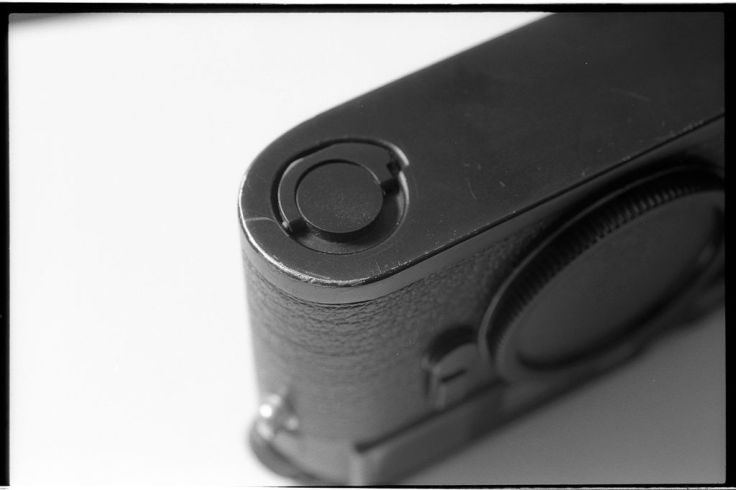
While vacationing in the Dominican Republic, my wife accidentally threw my M6 TTL .85 from its Domke bag, off of a table, across the ceramic floor of our suite. A few years later, while changing lenses without the neckstrap on, I dropped the M6 TTL from about three feet, square onto an unfinished concrete floor of an art studio. While exiting my Land Rover, the M6 TTL was dropped from the car door, onto a sidewalk where it bounced once before destroying the Voigtlander 50mm Nokton that was mounted. None of these incidents affected the RF calibration, shutter accuracy or meter functionality in the slightest from what I could tell. In each case, the camera went straight back to shooting like nothing happened. So maybe it’s time to get over our superficial love of ostentatious brass and choose the superior metal for our workhorses. I don’t give a shit if collectors pooh pooh my Leica’s silver/grey battle scars because my focus is tight and accurate for the thousands of shots I take while their brass beauties are shelf-bound. The M6 TTL is factually tougher and harder wearing than the more costly MP or even the arguably more finely crafted M3. Albeit, bubbling in the chromed zinc finish has occurred in some cases. You see some cheap M6’s listed on eBay that appear to have small pox. And while this was a real concern in the 80’s and 90’s when these cameras were new, now you can just buy a copy with a good finish and not worry about it. Supposedly storing the zinc bodies in their original fitted leather case was the cause. Some kind of unexpected reaction between the zinc and chemicals in the case material. That’s what you get for casing your camera for so long. In the decade that I’ve kept and used my M6 TTL in the humid East Coast air, it has some scratches and wear but no trace of dents or small pox. It’s silhouette is perfectly in tact. The grey through matte black chrome has a very handsome industrial look to me and the camera retains its low profile appearance. It’s not screaming to be ogled like gloss black and bright brass sheen as they catch sunlight. Some special edition M6 TTL’s actually have brass bodies. These M6 TTL’s are traitors.
HEIGHT
–M6 TTL’s and M7’s are 2.5mm taller than previous M’s. I like to think of the M6 TTL as standing more proudly than other M’s. The height increase takes place between the lens mount and viewfinder system and was apparently done to accommodate the additional electronics and reverse shutter speed dial mechanism. Because the view/rangefinder windows sit up higher from the lens, finder blockage by hoods is reduced. And this is good because faster/longer lenses which are physically larger and prone to causing blockage work well with this finder and it’s super long effective baselength. Just don’t try mounting a Dual Range 50 Cron and it’s unsightly goggles. But then, why would you run such a slow lens on such a precise body?
FILM ADVANCE LEVER
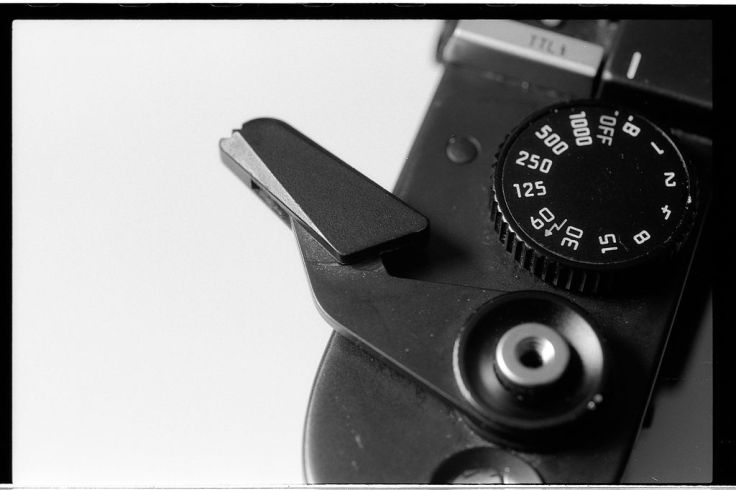
–Many people whine about the articulate plastic tipped advance lever of the M6 TTL and denounce it for not being a solid brass part. While I initially fell into this camp, I have become convinced that these people aren’t actually using their cameras. Yes, solid metal is wonderful, but that pivoting plastic tip allows one to shoot in colder temperatures sans icy fingers (plastic) and maintain a good grip on the camera and lever (pivot). It’s possible to have a solid metal lever fitted to an M6 TTL and in fact, some special editions have it as standard so if this is a sticking point for you, it’s possible to resolve. But if you can afford your Leica to have down time for this kind of cosmetic upgrade, you’re not shooting enough, slacker!
NEGATIVES
So those were my pluses for the Leica M6 TTL .85. Do I have any minuses for the worlds most perfect camera? Believe it or not, I do. But only because I’m an uptight, persnickety prick.
–Because the view/rangefinder windows are not framed on the front of the top plate like an M3, (I like to think of the M6 as “sans serif”) it’s very easy to smear ones sweaty fingers across the windows during fast paced shoots. So I find myself wiping them clear with my shirt tail or necktie from time to time. It’s kind of a double edged sword though; because they’re not recessed and smear easily, they also clean more easily. The M3 windows can get crud build-up around their perimeter due to being less easy to clean there.

–I’ve got to be honest, the diminutive rewind knob is some sort of emasculation punchline. I don’t know why this minuscule knob has survived on Leica M’s as long as it has. Yes, the angled crank à la M4 is an angled derby hat of class. You might not realise it but the angle does actually help one get a firm grip on the body and wind away on the crank. HOWEVER, that knob is just too small to get a good grip on (that’s what she said). I will never understand why the good people at Leica, or their detail-obsessed followers wouldn’t have turned this over generations ago. Maybe nobody else rewinds as fast as I do? I don’t know. Have a look at the Olympus OM series. The camera bodies themselves are very tiny and compact but with very large, easily handled controls. The wind knob on an OM SLR is a behemoth by comparison to the M6 TTL. I can windmill that sonovabitch fast enough to get a 36 exposure roll back in the canister faster than a motor drive. The only practical solution for Leica’s little knob is to buy a second Leica so you aren’t in such a hurry to rewind.

–A 1/2000th or even 1/4000th top shutter would be nice. By the late 70’s/early 80’s, it wasn’t uncommon for professional cameras to have 2000 or 4000 top shutter speeds. So why does even the current production MP stop at a sluggish 1000? It has something to do with physical limits on the ancient design of Leica’s deeply revered cloth focal plane shutter mechanism, which hasn’t changed much from the Oskar Barnack period. Some will tell you that Leica’s aren’t even reliably calibrated for 1/1000th. But this is all just getting heretical now. As a 35mm Leica photographer, you will stop at 1000 and you will love 1000 and I won’t utter anymore treason against it.
CLOSING WORDS
So as you can see, the Leica M6 TTL .85 is the pinnacle of anachronistic 35mm camera design and construction. Collectors can turn their musty dusty noses up at the M6 TTL’s unapologetic implementation of modern manufacturing materials, Voigtlander and ZM adherents can argue about viewfinder brightness and EBL with their shitty Japanese magnesium alloy wannabes, Pentax hoarders can pull the empty insides of their pockets out and shrug their shoulders whilst standing in front of 200 unserviced Spotmatics and MX’s and an equal number of 50mm 1.4 lenses claiming that the divorce papers would be on the table before a cheap $2k Leica even arrived in the mail, but I know, and all thinking persons know, in our hearts and in our souls and in our massive throbbing wrinkly brains, that the Leica M6 TTL .85 is better than all the other shit out there.

Thanks for reading, happy shooting and just FYI, all images in this blog were taken with a Nikon 😉
Follow, Favorite, Like, Add, Insult, Contact Johnny Martyr
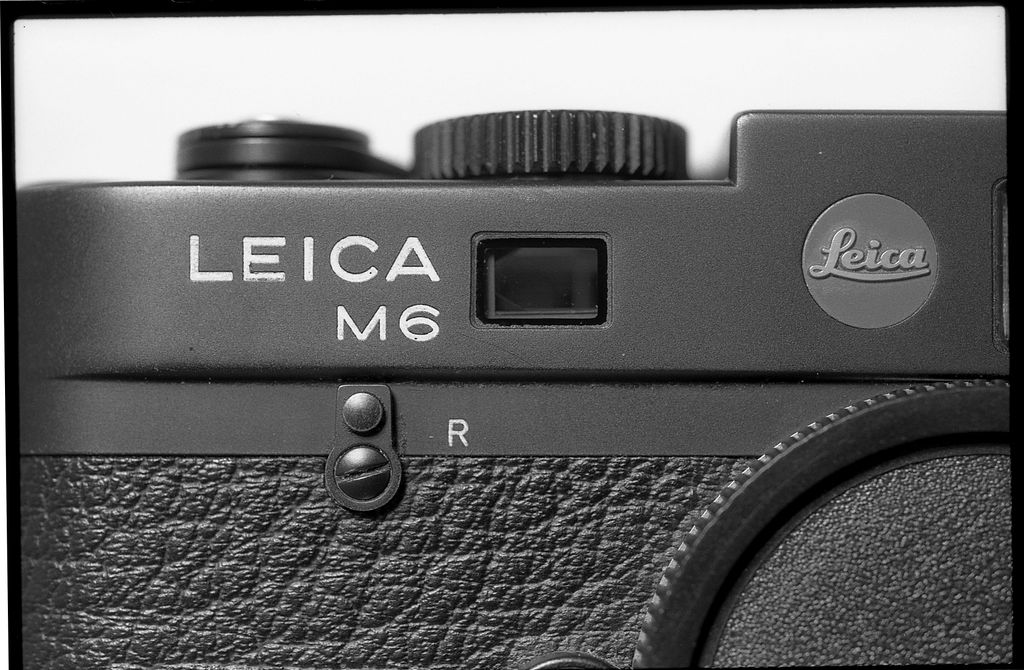







Very entertaining & well done. Cuts through the usual BS. I own (4) M6TTL’s: A silver-chrome .58 w/ Motor-M, a silver-chrome .85 w/ Motor-M, as well as a black paint (OMFG brass, lol) LHSA .72 w/ Leicavit, and a .85 LHSA also tricked-out with a black paint Leicavit. Yes I have some scratches on the black paint & some brassing. So what—I’m not a collector! Leica glass from 21 -to- 135, including the 21 Elmarit ASPH, 28 Cron ASPH, 35 lux ASPH, 2nd generation Noctilux, 90 APO & 135 APO. I used them for photojournalism style weddings, and now portraits, and personal work (retired). True workhorses they ARE! Metering dial is intuitive. Eyeglass wearer here. When using the 90 & 135 I like to use my 1.25 magnifier eyepiece on a .85 body. Some folks ask why so many bodies? I tell them black bodies for B&W and silver-chrome bodies for color negs. Never had to block the ASA dial with a film box top 🙂 . As for 1/1000 sec top shutter speed, I think I may have used it a handful of times. In my best “Johnny Martyr”: “That’s what they make neutral density filters for!”.
Favorite Leica image of mine was shot w/ a silver-chrome .85 & the 135 APO along the Cape May, NJ seashore during “sweet light”. Our then 8 year old son on the boardwalk behind a favorite restaurant (I like to eat as much as shoot, lol). It hangs as a 600 square inch uncropped 20″ x 30″ in my living room. Shot on Kodak Porta 160 (rated at 125 for a little extra “meat”), it’s a testament to Leica APO sharpness.
I enjoy everything you write on Facebook. You’re REAL! Take care & all the best!
LikeLiked by 1 person
That is an AMAZING compliment of Leica gear. I am trying to save for my second M6 TTL and a more modern 50 (all my 50’s are, well, from the 50’s or before!) but will buy these before I buy any other camera or lens.
Thanks so much for the detailed and thoughtful comment, it’s great to know I’m not alone.
LikeLike
My M6 TTL is the only camera I have regretted letting go of. I got a wild hair one day that I wanted to try a Leica digital M and I traded in my chrome body. Needless to say, I will have another some day. After reading this, probably sooner rather than later!
LikeLiked by 1 person
I bought mine exactly a decade ago NIB for $1500 with a good warranty. Now the same condition cam would be like $2500. So I would advise acting quickly!
How is your digital M?
LikeLike
Sold the digital M to buy a Hasselblad and some lenses!
LikeLike
Happy shooting!
LikeLike
I have the R4M and the R3M and have decided to ignore this blog. I have enough issues with self confidence. I will just pretend I have the best and hide when I see a Leica shooter approaching.
LikeLiked by 1 person
We’ll forgive you! Haha
LikeLiked by 1 person
They’re good cameras. Don’t be deterred by some pompous self proclaimed prick on the Internet trying to make you feel bad for your choices. I know the M6TTL very well and he’s shrouding it in romanticism. I’ve dealt with many of them and they’re actually quite prone to issues and this is the most ignorant thing I’ve read in a long, long time. This guy is a tool.
LikeLike
I find it fascinating that some folks are quicker to condemn someone without looking at the context of their work or stopping to read carefully enough to see that the article was written in satire. Thanks for reading though and happy shooting!
LikeLike
If you do not use a Leica rangefinder, why did you waste even one calorie in trolling this article?
LikeLike
I don’t think that the purpose here was to troll or offend – it’s okay if the CV folks enjoy their cameras too! Hope the blog was a fun read for you though.
LikeLiked by 1 person
I have older Leica cameras M3 and earlier and love to use them but when I have to get the photo, like when I’m being paid, I use Nikon. For me using Leica is more about the experience of taking the photo than the result. I know that is hearsay but that is how I feel.
LikeLiked by 1 person
I use Nikon and Leica for paid work and find each enjoyable and advantageous in use for different reasons. But whatever works for each of us as individual shooters is determined by us alone. Hopefully the fanatical humor in my blog was conveyed!
LikeLike
A very entertaining article!
LikeLiked by 1 person
LOL … this is so cool … well done 😉
LikeLiked by 1 person
Thanks for sharing. I bought a Leica M6 TTL .85 towards the end of last year and I’m absolutely loving it! 😃
LikeLiked by 1 person
I didn’t know you were a Leica girl, Natalie! Workin on any related blogs?
LikeLiked by 1 person
I got the bug for beautiful quality cameras after using my Hasselblad. I’d been contemplating getting a Leica M for a couple of years but kept talking myself out of it. In the end I finally took the Plunge on the Leica M6 TTL with the .85 viewfinder after a lot of research! I also settled on a 50mm Summicron lens which I absolutely love. The cost side made me wonder if I was making a big mistake and would regret buying one and initially it took me a while to get used to using a rangefinder again since I’d been using SLR’s. I’ve not regretted my purchase. The picture quality I’ve been getting is outstanding and I enjoy the handling of the camera now I’m used to it. I wanted to get a few months of use from it with different films before I blog about it 👍
LikeLiked by 1 person
Really glad you’re happy with it and stuck through the breaking in period. I bought mine with a few unrealistic expectations which are sort of myths I’ve decided, such as the whole handholding a rangefinder at speeds lower than the lens reciprocal. Is it better than with an SLR? Sure. Are the images acceptably sharp? Not really for general/most purposes. And people don’t talk about how important EBL is for focusing the fast lenses that are available either. There’s just a lot of hype/mythology around Leica’s and rangefinders in general that can be confusing to wade through when coming from an SLR. But that’s really cool that you chose the M6 TTL .85. It’s gone up in price since I bought mine but I feel like there’s also a lot of hate for these models from the collector and fauxtographer crowd due to superficial cosmetics and unfounded fears of zinc and electronics. Happy to hear that you traversed that! I’ll be looking forward to your write-up’s and photos!
LikeLiked by 1 person
I am definitely not a Leica purist. I chose my model based on what would suit my photography needs best, which was the Leica M6 TTL 👍
LikeLiked by 1 person
Thanks for a well done, entertaining tribute to an outstanding film camera. My LHSA M6TTL has faithfully served me for eleven years.
LikeLiked by 1 person
I read your long story about the M6ttl being the best Leica ever. Not so sure about that!
I have personally owned the M3, M4, M6 and the M6ttl, I now have the Leica MP.
They are machines that have past the test of time and they do have a lot of history attached to them from all the famous owners and likely have been to every corner of the planet.
So I bought a beautiful M3, for a lot of money. Then I read about the rubberized coating aging and bits breaking off. Also there was lots of concern that parts were getting harder to find. On that note I sold the M3 and thought I should buy a more modern Leica so I bought the M4.
A guy came up to me one day and said he wants to buy the M4 from me, so I sold it to get the M6. I actually think the M4 was a better camera and the M6 did not offer anything extra.
I really liked the M6 but for convenience I wanted a light meter. I sold the M6 and bought the M6 TTL. Once again I loved this camera and also like the TTL flash. I am one of the few that uses a lot of flash.
Then one day I picked up my M6 TTL and noticed a bubble forming on the top plate. Hmmm, whats that. A few months later a second bubble appeared on my top plate. The camera was the chrome version. I always stored the camera in a low humidity place, (not hard to do in central Canada). Then I discovered that this was rather common. Then I also read that it was difficult to get a replacement top plate and if you could find one it was very expensive.
So I decided to sell my M6ttl because I was pissed off so much about the top plate. I bought this camera to last the rest of my life as I would take good care of it. But when the camera started to disintegrate by itself I no longer wanted to keep it. If you drop your camera and you get a few marks so be it, but when the top plate rots by itself to the extent to produce holes, then Leica should have come to the rescue. Just make a brass top plate replacement and I would have sent it in to get it done. But they don’t do that.
I ended up buying the Leica MP film camera, and I will keep this for the rest of my life. No more worries about parts or rotting holes in the top plate etc. The MP is all brass. Apart from a few minor differences between the models one easily adapts to the model they own. They are all very similar.
People who want Leica film cameras are likely well versed in film photography and they appreciate that this mechanical marvel will always give them a photo no mater what the conditions are.
I currently own 25 film cameras, so which one do I like the most. Surprise, Hasselblad CM500.
The camera I like the best for a point and shoot color, Contax G2, the camera I like the most for technical achievement and ability is the Nikon F4s followed by the Nikon F5.
The camera I like the best for black and white when I am alone wandering around with a camera, then for sure it will be my Leica MP with the 90mm lens or the 35mm lens.
LikeLike
MY long story?! Seems you have one of your own! I am sorry to hear about the finish issues with your M6 TTL, I also noted this issue in my article/blog. And please understand, this is hyperbole. Everyone has their own favorite cameras and it’s nothing to separate oneself from other shooters over – that was my main point! Cool you’ve owned so many fantastic cameras, happy shooting!
LikeLike
Johnny – every time my acquisition syndrome kicks in and I look at the MP, I go to my iPad faves and read your report on the TTL 0.85 again. And I just go to the shelf, grab my TTL 0.85, and off I go again shooting a stack of FP4 and Portra 160 with my Cron 50 and Cron 35, and always being happy. Thank God I got my M6 body for $1600 as new, in box. They cost a shit load now – probably due to your WordPress post. Do me a favor and write a blog about how crappy the Summilux 35/50 is/are. Maybe you’ll crash the used market. Cheers. (PS yes, the finder could do with an MP upgrade. Must do that eventually. Doesn’t happen much, but it is a pain in the ass.)
LikeLiked by 1 person
Haha, thanks for reading – happy to contribute to your investment! A negative review to drop prices, now there’s an idea. 😉
LikeLike